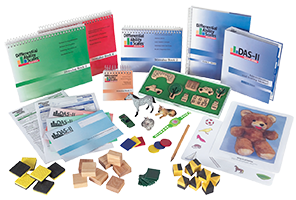The Differential Ability Scales®-II (DAS-II®) provides a psychologist with insight into how a child processes information, enabling appropriate interventions and/or recommendations for the classroom and at home.

Differential Ability Scales-II
DAS-II
The Differential Ability Scales®-II (DAS-II®) provides a psychologist with insight into how a child processes information, enabling appropriate interventions and/or recommendations for the classroom and at home.
Choose from our formats
Kits
Starter & complete kits, print & digital
1 option
Test forms reports
Booklets, record forms, answer sheets, report usages & subscriptions
5 options
Support materials
Manuals, stimulus books, replacement items & other materials
26 options
All products
All tests and materials offered for DAS-II
32 options
